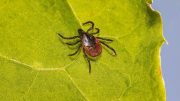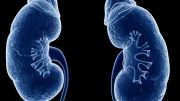A large number of chocolate products have been recalled in ten European countries due to an outbreak of monophasic Salmonella Typhimurium.
A monophasic Salmonella Typhimurium outbreak has been connected to chocolate goods supplied by a large international corporation, with 150 cases recorded in ten European countries, mostly affecting young children.
Since the first cases were discovered in the United Kingdom (UK) in February 2022, one of the largest chocolate product recalls in European commercial history has occurred.
Because of the Easter holiday, the wide distribution of products, and the vulnerability of the people who have been sickened, timely and accurate microbiological and epidemiological information has been very important in treating this major food-borne outbreak.
In a quick communication published in Eurosurveillance, Larkin et al. present epidemiological investigations and cross-country coordination of measures in a quick communication.
In February 2022, a small five-single nucleotide polymorphism (SNP) single linkage cluster of eight cases of monophasic Salmonella enterica subsp. enterica serotype Typhimurium (1,4,5,12: i:-) eBG 1, sequence type (ST) 34 infection with monophasic Salmonella enterica subsp. enterica serotype Typhimurium (1,4,5,12: i:-) eBG 1, sequence type (ST) 34 infection with monophasic Salmonella enterica subsp.
The cluster was remarkable in that all but one of the reported cases were under the age of ten, and the strain had genotypic markers for an atypical antibiotic resistance pattern not seen in livestock, food, or human disease cases in the UK. The cluster was not related to any monophasic S. Typhimurium isolates that had been found in the UK before.
Hypotheses were made through exploratory interviews that used open-ended, anthropological questions instead of binary “yes/no” questions. Then, a specific questionnaire was used to refine the hypotheses made through the exploratory interviews, which led to a strong signal for a specific brand of chocolate products.
Following the UK’s notification on the EpiPulse Food and Waterborne Diseases (FWD) platform on February 17, 2022, and an Early Warning and Response System (EWRS) alert on March 25, Germany, Sweden, France, the Netherlands, Luxembourg, Norway, Ireland, Belgium, and Spain reported confirmed or probable cases in their respective countries.
There were 150 confirmed and probable cases detected by April 8, 2022, with case sampling dates spanning from December 21, 2021 (the first UK case) to March 28, 2022. According to descriptive epidemiological investigations, cases were found to be mostly in young children.
The hospitalization rate was 42 percent of cases for which data were available, which was higher than the rate typically reported in salmonellosis outbreaks and individual cases of S. Typhimurium infection.While the demographic features of the people who got sick are likely to play a role, this could be a sign that the infection was more severe in this outbreak.
Most of the items implicated in the epidemiological investigations were primarily produced at a single production site in Belgium, according to food chain investigations in the impacted countries. That’s where the bacteria that caused the outbreak was found in December 2021. This was the same factory where that happened.
Risk management actions were taken in all affected countries based on strong descriptive epidemiological evidence implicating these products in this outbreak, identified food chain links, and evidence of contamination previously identified at production, including withdrawal of all product lines produced in the identified production facility and extensive product recalls, supported by news alerts and consumer advice, beginning with the first recall on May 2.
Extensive recalls began on April 7 as investigations in numerous nations advanced, yielding additional evidence to support the recalls.
Belgian authorities shut down production at the factory on April 8, and the WHO/FAO International Food Safety Authority Network (INFOSAN) sent out a global alert on April 10 to 77 countries and territories where the implicated items had been sold. This led to a global recall of the products.
A profile of multidrug resistance
The multidrug resistance profile of the outbreak strain, particularly resistance to kanamycin and gentamicin, as well as the presence of lnu(F), a determinant of lincosamide resistance, were notable features of the outbreak, which are unusual for monophasic S. Typhimurium in Europe.
Although the outbreak strain is susceptible to fluoroquinolones, azithromycin, and third-generation cephalosporins, which are effective treatment options for cases of bloodstream infection, the unusual AMR profile provided an additional feature of the outbreak strain that could be assessed by all countries in the early stages of investigation for case identification and hypothesis generation.
This shows that it’s important to include more unusual AMR profiles in early international communication and to include them in outbreak case definitions. This helps to identify possible or likely outbreak cases before WGS and/or epidemiological investigations are used to confirm outbreak cases.
The rapid pace of the epidemic investigations required early reporting of the outbreak’s detection and preliminary findings from the UK investigation, followed by rapid multi-country coordination in information sharing.
The descriptive epidemiological data, especially when combined at an international level, offered solid evidence implicating the vehicle of infection, allowing public health and food safety agencies to quickly implement the necessary regulations.
Later, in December 2021, the outbreak strain was found in the processing plant where the company’s products were made.
This added microbiological evidence that the company’s products were linked to the Europe-wide outbreak.





